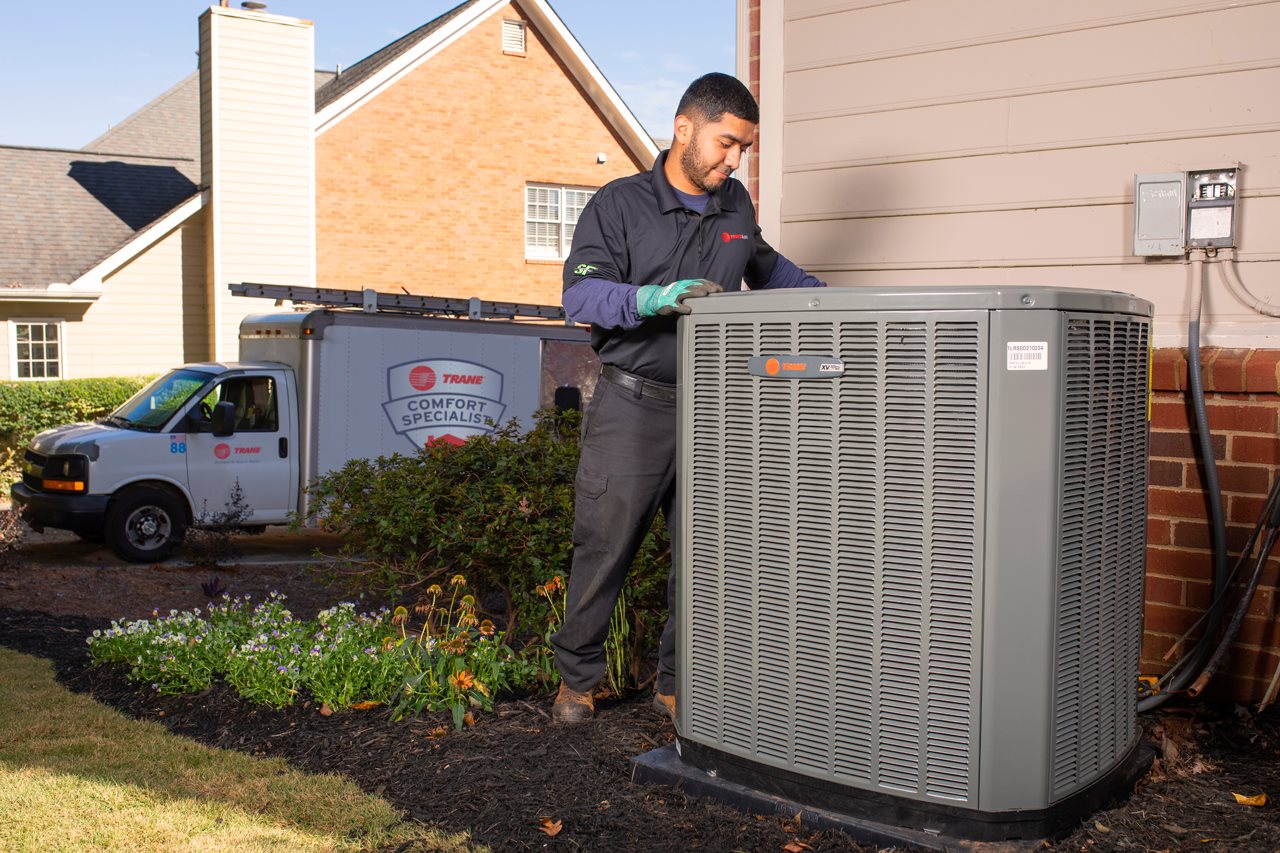2023-08-24T08:01:00
(BPT) – When a home’s interior is uncomfortably hot or the condenser starts cycling on more frequently to maintain the thermostat setting, most homeowners are quick to blame the air conditioner. While installing a larger “box” or condenser might seem like the obvious solution, the home’s cooling equipment may actually be in optimal condition.
You’ve probably heard that a system is only as good as its weakest link, and that applies to the comfort systems that contribute to a home’s energy efficiency and comfort. Comfortable air inside a home is a result of a system of components that work together with the home’s infrastructure. The air conditioner doesn’t do the cooling job on its own: It works in conjunction with ductwork, attic insulation and air return registers to keep indoor air comfortable.
Even the most energy-efficient HVAC equipment will not deliver its full potential if problems in the home put additional stress on the equipment. An air conditioning unit that must work harder to keep a home cool will consume more energy, leading to higher energy bills. This can potentially reduce the returns a customer should be enjoying from their investment in energy-efficient equipment.
Problems in attic spaces
What problems inside a home can cause its HVAC system to work harder? The attic area presents a number of challenges. Over time, attic ductwork that transports conditioned air throughout a home can become dented, crushed or loosened. Damage can result from activities in the attic, accidental contact or pests. Ducts can weaken and connections can come loose. Ductwork joints and seams may degrade as a home ages. Any of these issues can contribute to air leaking from ducts. Air leaks allow conditioned air to escape into the attic while letting contaminants from the attic infiltrate into ducts, where they’re distributed back into the home. An increase in dust levels is a common sign of compromised attic ductwork.
Climate conditions, including moisture and heat, present other concerns in attic spaces. If an attic has insufficient levels of insulation or is poorly ventilated, metal ductwork can be susceptible to corrosion. Prolonged exposure to extensive heat and moisture, such as the high temperatures, humidity and rainfall seen in many parts of the U.S. this summer, can cause ductwork to deteriorate.
A proactive approach to mitigating attic issues
All of the problems described above can result in a system working harder than it needs to in order to maintain temperature. By taking a proactive approach to address issues in the attic, homeowners can minimize stress on HVAC equipment and help reduce unnecessarily high heating and cooling bills.
Attic insulation prevents heat from escaping the home during colder months and infiltrating the home during warmer seasons. Mitigating these thermal challenges can reduce the load on a home’s heating and cooling systems. The payoff for customers can be reduced energy consumption and lower heating and cooling bills, as well as potentially extending the equipment’s service life.
Not every contractor is an expert when it comes to caring for a home’s indoor air. Owens Corning certifies contractors that specialize in caring for homes’ indoor air. Owens Corning equips Certified AirCare® Professionals with tools to evaluate attics and make home-specific recommendations to support comfort and usage throughout the whole home. HVAC technicians certified as AirCare® Professionals are trained to spot conditions that could be reducing a home’s energy efficiency and compromising occupant comfort. During a thorough inspection of the attic, a Certified AirCare® Professional will evaluate ductwork, looking for holes, loose connections or signs of degradation. This inspection will help inform suggestions for repairing or replacing ductwork to support improved comfort and energy efficiency.
Beyond inspecting ductwork, the Certified AirCare® Professional will measure attic insulation levels and suggest the optimal level to achieve improved energy efficiency and comfort. Proper levels of attic insulation also help maintain a more consistent indoor temperature, supporting a comfortable indoor environment in all seasons. Additionally, adequate attic insulation can help lighten the load on HVAC equipment, potentially extending its lifespan and reducing the need for repairs.
Attic insulation can deliver non-thermal benefits as well. For example, sufficient levels of insulation can help reduce external noise entering the space and less energy usage may reduce a home’s carbon footprint.
Homeowners have long relied on HVAC technicians to regularly service and maintain heating and cooling equipment. Having a home’s attic inspected by a technician certified by Owens Corning as an AirCare® Professional takes that diligence to a new level by caring for the home’s air as an intrinsic part of whole home comfort and value.
©Owens Corning 2023. All rights reserved.









